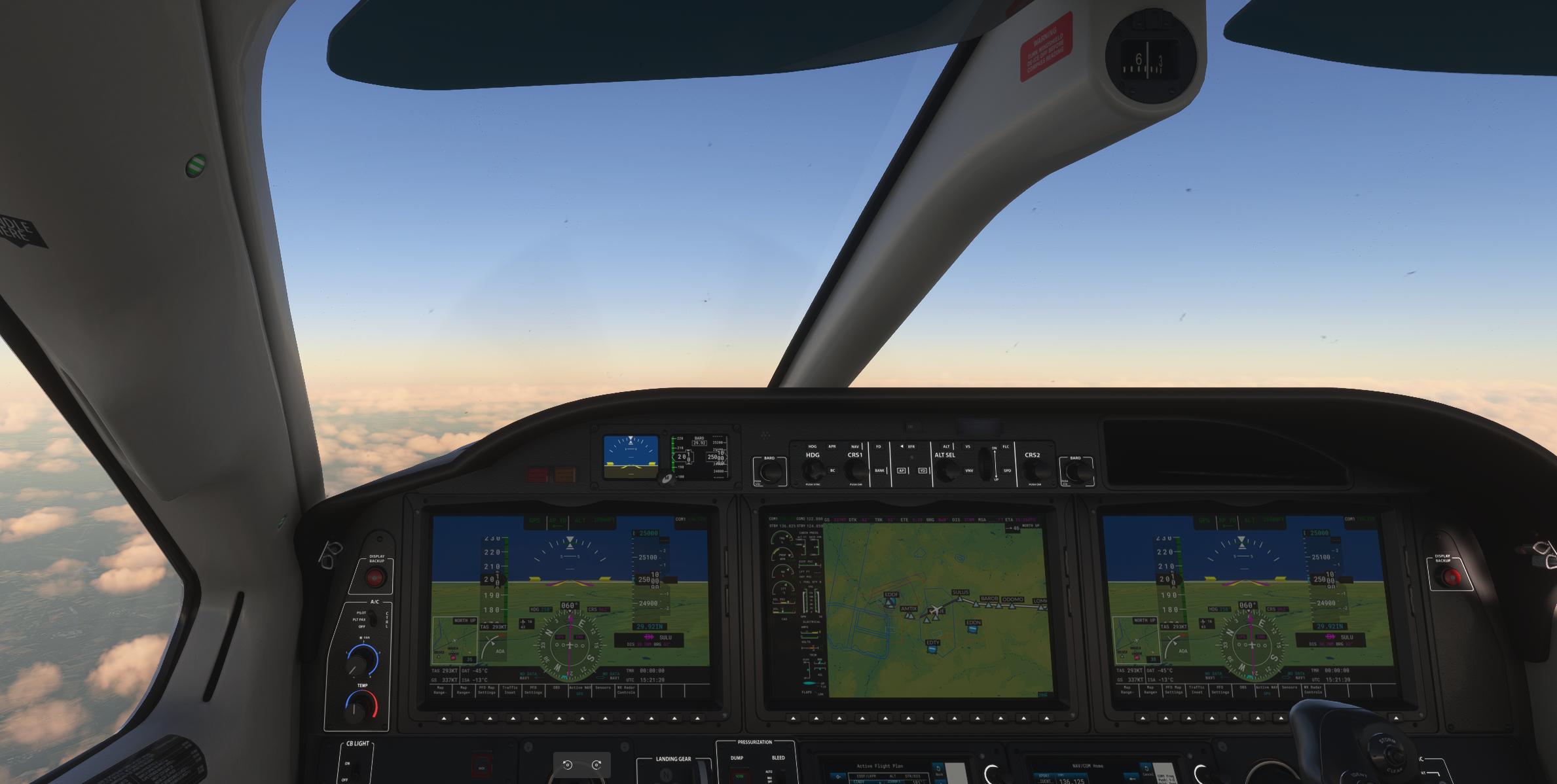
I’ve been virtually flying on VATSIM for some time now, and the small Diamond DA40 is great fun, especially for Visual Flight Rules (VFR) operation. With its Garmin G1000 flight management system, flying Instrument Flight Rules (IFR) to and from larger airports is also a lot of fun, especially since the software was updated to the “NXi” version in the simulator last year, which supports pretty much the whole range of IFR procedures. It’s also fun to be the ‘odd-duck’ in the traffic flow, as the DA40 is obviously much slower than airliners, which has air traffic controllers sweating a bit to squeeze me into an approach queue on a Friday evening. The downside: Due to the relatively low speed of the DA40, the number of airports to fly to and from in VATSIM is limited by the time it requires to fly between them. So the obvious ‘next step’ was get into a somewhat faster plane.
As I’m used to the Garmin 1000 FMS, I decided to have a closer look at the Daher TBM-930 single propeller plane that has a cruise speed of around 300 knots at higher altitudes, which is more than twice as fast as the DA40. The TBM-930 includes a Garmin G3000 flight management system, which significantly reduces the learning curve, as a lot of things feel very familiar. The main advantage of the G3000 over the G1000 is the touch control input, which replaces a number of rotating knobs. That speeds up a lot of operations during an IFR flight, like changing communication frequencies, modifying waypoints in the flightplan, changing arrival, transition and approach procedures on the fly, in case air traffic controllers do not behave as expected during flight planning (which they never seem to do).
From a virtual flying point of view, I expected the TBM-930 to be more difficult to handle than the smaller DA-40. I was positively surprised, however, that this was not the case, and takeoffs and landings feel easier to do in this bigger plane. The only additional thing I had to learn while flying ‘by hand’ was how to trim the rudder during flight, which is not required in a DA-40. In a real 930, there are rudder trim switches on the yoke for this, but I had to resort to the keyboard, as I had no buttons left on my controller hardware to assign this function to. Not a big deal, and quite frankly, a TBM-930 is mostly flown with the autopilot, as its optimized for speed and not for flying by hand.
A bit of a pain point at the moment is that the G3000 in the MSFS 2020 flight simulator misses some features that one has to compensate for with ‘manual work’ during the flight. The current software version, for example, only shows barometric pressure in inches of mercury (Hg) instead of hectopascal (hPa) used outside the US, the map view during IFR flight is limited, some IFR procedures such as holds over a waypoint and missed approaches have to be flown manually, ILS localizer frequencies have to be set by hand, final approach minimums can’t be programed, the flightplan is limited to waypoints, so airways can’t be programmed directly, and there are small oddities like that an engine startup abort doesn’t deactivate the starter. One might ask who needs things like holds and missed approach procedures in a simulator, where the weather and traffic can be set to one’s liking? True, but when flying on VATSIM with real weather, I’ve had more than one final approach that came very close to the minimum visibility requirement before a missed approach had to be flown. Also, airspace around bigger airports such as Frankfurt and Zürich can become pretty busy during evening hours, so having to fly holds before landing is a common procedure. And when these things happen, you are glad for all the help you can get to keep things nice and stable. One can work around these shortcomings or install a G3000 improvement ‘mod’, but I’m glad that the next simulator update scheduled for this month will include G3000 improvements that will address pretty much all of these things.
It’s amazing how much work keeps flowing into the simulator and how active the third party scene is developing software improvements and airport sceneries. Given the very niche of this activity, I wonder how this can be financially viable. But it seems to be. So until next time, happy flying!